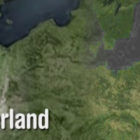
Oct 14, 2012
What do Doggerland and Atlantis have in common? Not a whole lot, actually… but we take a look at both anyway.
Some relevant links:
Britain’s Atlantis Found: http://bit.ly/LfddBc
Wikipedia: http://en.wikipedia.org/wiki/Doggerland
Recently geophysicist Richard Bates of the Department of Earth Sciences at St. Andrews unveiled an exhibit called the Drowned Landscapes at the Royal Society Summer Science Exhibition in London.
Dr. Bates said Doggerland was the real heartland of Europe until sea levels rose to give us the UK coastline of today. We have speculated for years on the lost land’s existence from bones dredged by fishermen all over the North Sea, but it’s only since working with oil companies in the last few years that we have been able to re-create what this lost land looked like.
Dr. Bates and his collaborators have now been able to model Doggerland’s flora and fauna and build up a picture of the ancient people that lived there.
They have also been able to begin understanding some of the events that changed the land, including the sea rising and a devastating tsunami.
Their research suggests that the populations of these drowned lands could have been tens of thousands, living in an area that stretched from Northern Scotland across to Denmark and down the English Channel as far as the Channel Islands.
The findings suggest a picture of a land with hills and valleys, large swamps and lakes with major rivers dissecting a convoluted coastline. As the sea rose the hills would have become an isolated archipelago of low islands. By examining the fossil record (such as pollen grains, microfauna and macrofauna) the researchers can tell what kind of vegetation grew in Doggerland and what animals roamed there.
They’ve even found evidence of standing stones (common across the UK), and a mass mammoth grave.
